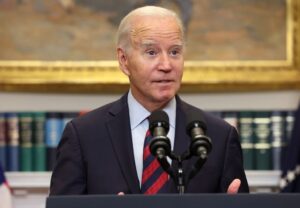An estimated 75,000 healthcare workers in five states walked off the job yesterday (Oct. 4). In the last few months, the Writers Guild of America, the Screen Actors Guild/American Federation of Television and Radio Artists, and the United Auto Workers have gone on strike. Now what is being billed as the largest healthcare walkout in US history is underway.
Members of the Kaiser Permanente Union are refusing to work, seeking better pay for critical care staff. This includes nurses, lab and radiology technicians, EMTs, and other personnel. The walkout occurred after contract negotiations broke down and is scheduled to last for three days. The strike is taking place at medical offices and hospitals in Colorado, Oregon, California, Washington state, Virginia, and the District of Columbia. Optometrists and pharmacists joined the strike only in the last two locations – Virginia and DC.
Kaiser is commonly known as an HMO, or health maintenance organization, a network of healthcare providers offering lower costs to patients. At issue are inadequate staffing levels, pay raises, and retirement benefits.
Healthcare Workers Now – Who’s Next?
It would not be an overstatement to say labor unrest is sweeping across the United States. Cornell University’s Labor Action Tracker, which analyzes union activity, revealed that strikes rose 52% last year. Its database showed “there were 424 work stoppages in 2022, including 417 strikes and seven lockouts, up from 279 in 2021.” The Cornell tracker for 2023 year-to-date confirmed there have been 299 labor actions thus far.
Political Pandering for the Union Vote
Joe Biden has repeatedly claimed he would be the most pro-union president ever. To great fanfare, the White House touted the Scranton native as the first president ever to visit a picket line. It was a political optic scheduled after Republican presidential front-runner Donald Trump announced he would deliver a speech to striking United Auto Workers in Michigan.

Joe Biden Photo by Kevin Dietsch/Getty Images)
In a March 2022 article, even The Hill labeled the “most pro-union president a dud.” Citing Labor Department statistics, Jarrett Skorup wrote, “In 2021, the number of union workers declined by 241,000, and private-sector union membership now stands at merely 6.1 percent — the lowest level since the federal government started tracking this data.”
The Hill pointed to three pro-union efforts by the Biden administration that came up empty. First was his endorsement of the PRO-Act, which “would eliminate the 27-state right-to-work laws, forcing millions of workers to pay unions against their will just to keep their jobs.” That effort went nowhere.
Next, he “rolled back federal transparency requirements for unions, making it harder for workers considering a union to find out how, exactly, their dues money is being spent.” Lastly, Biden bumped up the spending on “federal labor enforcement, essentially empowering regulators to pressure private companies into unionizing.”
On the other hand, Biden has pushed electric vehicles on the American consumer, and auto workers understand that will mean less work for them. As Liberty Nation’s Andrew Moran aptly noted, “The problem with this plan, workers say, is that these types of cars require fewer workers to produce, and battery manufacturing is performed with lower pay and inside non-union facilities.”
The political pandering continues unabated as Democrats and Republicans duke it out for the union vote. Considering the number of strikes this year, it is quite clear unionized workers are not a happy bunch. Could this be, pray tell, because of a rocky economy? Inflation, high interest rates, and putting climate change rather than workers first have squeezed the rank and file in the labor unions. Considering the current economic conditions, more rather than fewer strikes are likely as businesses empty out and the picket lines balloon.

